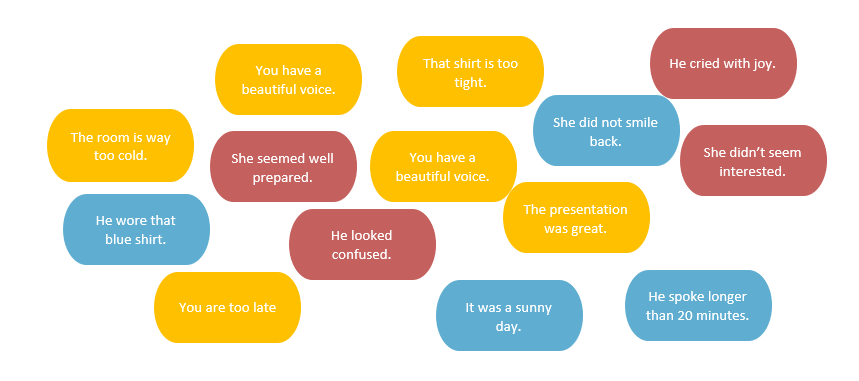Training Perception
Exercise 1: Selective Perception - Gorilla Experiment
Application
- Show the video "The Monkey Business Illusion" by Daniel Simons: https://youtu.be/IGQmdoK_ZfY
- Have the students count how many times the white-clothed players pass the ball.
Objective
The students will experience how our perception is filtered subjectively. And we do not even notice that.
Reflection
- What does this mean for our communication?
- How is the way we perceive each other in everyday situations filtered by our habits, expectations, Interpretations, judgement, beliefs, and current condition?
Exercise 2: Perception, judgement and interpretation
"Right" and "Wrong" are not the categories that help us in our personal development. The same is true of good and bad judgements. However, if you observe yourself in everyday situations, you may notice that such evaluations are often found.
Take the simple question “How do you feel?” for example. Common answers are “Good” or “Not so good”. A truly descriptive answer to the questions (e.g. happy, a bit weary, stressed, relaxed) is rather uncommon.
On the one hand, perception is subjective and on the other hand, it is always influenced by situational factors.
Take a lecture for example, which you found awesome yesterday because it was presented slowly and thus well understandable for me. On another day, when I have a headache and want to get out of the warm room as quickly as possible, it could possibly be too slow and too tiring for me. Or maybe a student speaks far too quietly for me, but at just the right volume for the person sitting next to me.
Discovering communication is not about doing things right or wrong but about getting to know more about us, the way others see us and how we perceive the world. A useful exercise is therefore to practise describing - without evaluating and without interpreting.
Application
To do this, you can either prepare slips of paper with statements or have students write down their own sentences and put them in order.
|
Perception |
Judgement |
Interpretation |
||||
|
|
|
Objective
The students are aware of the difference between perception, judgement and interpretation and can assign statements to the three categories.
Next step
Students pay attention to evaluations and interpretations in everyday life. Everyone reports on an experienced situation that has stuck in their memory in the next session.

No Comments